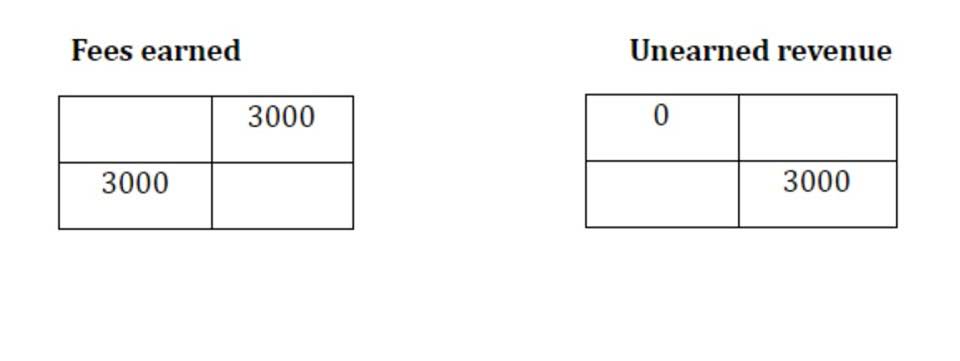
The working capital ratio shows the ratio of assets to liabilities, i.e. how many times a company can pay off its current liabilities with its current assets. Operating working capital, also known as OWC, helps you to understand the liquidity in your business. While net working capital looks at all the assets in your business minus liabilities, operating working capital looks at all assets minus cash, securities, and short-term, non-interest debts. Net working capital is the financial cushion that allows businesses to meet their short-term financial obligations. Think of it as the money set aside to pay your monthly rent, salaries, and utility bills.

Growth Rate

In addition to handling day-to-day expenses, net working capital provides the financial resources needed to seize growth opportunities. Just as individuals save money to make investments, businesses use their net working capital to invest in projects expected to generate more revenue. This could include expanding product lines, entering new markets, or upgrading equipment. Current liabilities encompass all debts a company owes or will owe within the next 12 months. The overarching goal of working capital is to understand whether a company can cover all of these debts with the short-term assets it already has on hand.
- Current assets are economic benefits that the company expects to receive within the next 12 months.
- In this perfect storm, the retailer doesn’t have the funds to replenish the inventory flying off the shelves because it hasn’t collected enough cash from customers.
- It ensures smooth day-to-day operations and can influence a company’s creditworthiness and financial stability.
- On SoFi’s marketplace, you can shop and compare financing options for your business in minutes.
- My Accounting Course is a world-class educational resource developed by experts to simplify accounting, finance, & investment analysis topics, so students and professionals can learn and propel their careers.
- Measuring its liquidity can give you a quantitative assessment of your business’ timely ability to meet financial obligations, including paying your employees, your suppliers, and your bills.
How to Find Change in NWC on Cash Flow Statement (CFS)
In this scenario, the company’s net working capital decreases, signaling potential cash flow constraints and liquidity challenges. Change in Working capital cash flow means an actual change in value year over year, i.e., the change in current assets minus the change in current liabilities. With the change in value, we will understand why the working capital has increased or decreased. Software companies generally tend to have a positive change in working capital cash flow because they do not have to maintain an inventory before selling the product. As a business owner, it’s important to calculate working capital and changes in working capital from one accounting period to another to clearly assess your company’s operational efficiency. Lenders will often look at changes in working capital when assessing a company’s management style and operational efficiency.
- The net working capital formula is calculated by subtracting the current liabilities from the current assets.
- By measuring changes in working capital over time, businesses can gain valuable insights into their cash flow, operational efficiency, and overall financial performance.
- In this scenario, the company’s net working capital decreases, signaling potential cash flow constraints and liquidity challenges.
- A higher ratio means there’s more cash-on-hand, which is generally a good thing.
- The quick ratio—or “acid test ratio”—is a closely related metric that isolates only the most liquid assets, such as cash and receivables, to gauge liquidity risk.
Working Capital Calculation Example
As the company grows, it may need to invest more in its working capital to support increased production or inventory levels, resulting in a higher net working capital requirement. Conversely, if a company is not growing, it calculate change in working capital may not need as much working capital and may experience a decrease in net working capital requirements. Now that we understand the basics and the formula of the concept, let us understand how to calculate the changes in net working capital cash flow through the step-by-step explanation below.
Working Capital Formula: What It Is and How To Calculate It
Aside from gauging a company’s liquidity, the NWC metric can also provide insights into the efficiency at which operations are managed, such as ensuring short-term liabilities are kept to a reasonable level. Current assets are those that can be converted into cash within 12 months, while current liabilities are obligations that must be paid within the same timeframe. The benefit of neglecting inventory and other non-current assets is that liquidating inventory may not be simple or desirable, so the quick ratio ignores those as a source of short-term liquidity. The working capital ratio is a retained earnings method of analyzing the financial state of a company by measuring its current assets as a proportion of its current liabilities rather than as an integer. Shortening your accounts payable period can have the opposite effect, so business owners will want to carefully manage this policy.

What Is the Relationship Between Working Capital and Cash Flow?
It’s useful to know what the ratio is because, on paper, two companies with very different assets and liabilities could look identical if you relied on their working capital figures alone. Change in working capital refers to the way that your company’s net working capital changes from one accounting period to another. This is monitored to ensure that your business has sufficient working capital in every accounting period, so that resources are fully utilized, and to help protect the company from experiencing a shortage in funds.
- It may take longer-term funds or assets to replenish the current asset shortfall because such losses in current assets reduce working capital below its desired level.
- Working capital, often referred to as the lifeblood of a business, represents the funds available for day-to-day operations.
- To be considered “current”, these liabilities and assets must be expected to be paid or accessible within one year (or one business cycle, whichever is less).
- A company with a ratio of less than one is considered risky by investors and creditors because it demonstrates that the company might not be able to cover its debts if needed.
Conversely, a decrease in working capital means that a company has more cash available for other purposes. For example, if a company reduces its inventory levels or collects its accounts receivable faster, it will require less cash to finance these activities. This decrease in working capital will have a positive impact on the company’s cash flow since the cash is now available to be used for other purposes. By analyzing changes in working capital, companies can gain valuable insights into their cash flow, liquidity, and financial health, and make more informed decisions about operations, investments, and strategic planning.

To operate your business effectively, you need to be able to pay off short-term debts and expenses when they become due. Working capital acts as a measure of a company’s ability to meet its short-term obligations and invest in growth opportunities. It ensures smooth day-to-day operations and can influence a company’s creditworthiness and financial stability. The working capital requirement formula focuses on the components that directly impact the company’s operating cycle — inventory, accounts receivable and accounts payable.
